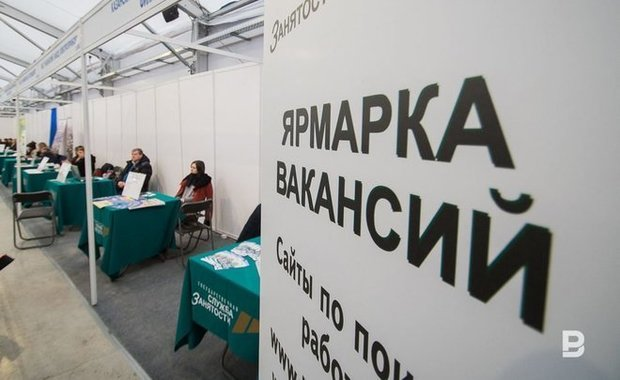Olga Belenkaya: ‘The risks of a drift from the market economy to an administered one are increasing’
Despite the turmoil in the recent months, Russia has managed to adapt to the new conditions, save key amounts of oil export and stabilise the situation in the financial sector. But we shouldn’t relax, new negative factors can appear by the end of the year. In an op-ed column for Realnoe Vremya, analyst of Finam FG Olga Belenkaya explains what awaits the Russian economy and what new risks we should be ready for.
Pessimistic expectations in early spring didn’t come true — the Russian economy adapted to the new conditions in the second and third quarters better than expected. This happened because of the preservation of key amounts of oil exports, stabilisation in the financial sector, state support measures and a lowered key rate of the Central Bank. Consumption and import started to recover after a plunge.
Amid a softer and extended reaction of the Russian economy to the sanctions than expected, outlooks on the Russian economy’s decline softened — a September consensus analysis of analysts done by the Central Bank assumes that Russia’s GDP will decrease by 4,2% this year (6,0% was the July outlook) and inflation by the end of the year will reach 12,4% (15,0% in July). The official forecasts are by far more optimistic — the Ministry of Economic Development expects GDP to fall by 2,9% this year. We expect GDP to shrink by 3,5-4,5% and inflation at 12-13% this year.
At the same time, new negative factors can appear by the end of the year and next year. From a perspective of foreign demand, it is the EU’s partial embargo on Russian oil and petrochemicals coming into force (this December and next February) and a ceiling of prices for Russian oil and petrochemicals approved by the EU Council and G7 leaders to their legal sea shipping to third countries. US Finance Minister J. Yellen offered $60 per barrel as the price cap, moreover, the draft of the 2023 budget includes the average annual price for Urals at about $70 per barrel.

Not price but physical amounts of production matter for GDP dynamics more
Main uncertainties are related to this — if the biggest “friendly” buyers of Russian oil (India, China, Turkey) will join the cap, how the price of deals will be controlled, if Russia and “friendly” buyers really provide alternative mechanisms of sea shipping and insurance of energy resources if Russia doesn’t accept the terms of the cap, the transportation and insurance by Western companies turns out to be unavailable.
If Russia opts for cutting supplies or won’t be able to resend all falling out European export to other destinations, it will probably have to decrease oil production (by our estimate, it can fall by 1-1,5 million bpd at the lowest point). At the same time, world oil price can skyrocket, which will additionally complicate economic conditions in feedstock importing countries). But not the price but physical amounts of production and export matter for the dynamics of Russia’s GDP, therefore their cut can lead to a new decline in the economy early next year. If it becomes possible to redirect Russia’s key oil exports to other markets, buyers will likely increase the pressure to obtain a discount, which can bring a slump in Russia’s oil and gas incomes, which is partly compensated by the likely weakening of the ruble, but the negative effect for the economy will be smaller.

We expect GDP to fall by 3,5-4,5% this year
In the light of the recent events, risk both in domestic demand and supply have increased. The mobilisation in combination with intensified migration is already leading to a deficit of workforce at macrolevel, which will restrict supply given the record-low unemployment and at the same time weaken consumption (consumers have switched to a saving mode).
The annexation of the People’s Republic of Luhansk, People’s Republic of Donetsk, Kherson and Zaporizhzhia oblasts resulted in a new twist in the aggravation of relations between Russia and the West and created an uncertainty when it comes to the possible augmentation of budget expenses. The risks of a drift from the market economy to the administered one are increasing, which threatens with a greater tax burden, a cut in available resources to develop the sectors aimed at the consumer market.

The Central Bank signalled in September that the fall in the key rate was coming to an end. The events that have happened since then confirm that there is likely going to be a pause at the October meeting, and a rise in the key rate can become the next step. The Central Bank will evaluate the disinflation impact of shrunk demand and proinflation influence of the expected decreased supply. A notable increase in the planned budget deficit in 2023-2024 compared to the Finance Ministry’s June calculations, additional budget expenses this year and in the next few years due to the annexation of new territories will likely be considered by the Central Bank and impact higher key rate figures. It is noteworthy that even if the key rate hasn’t changed, monetary factors have been tightened — the earnings of federal loan bonds have risen, while amid an outflow of liquidity and increased credit risks, banks have started to raise deposit and loan rates and tighten loan issue.
Reference
The author’s opinion does not necessarily coincide with the position of Realnoe Vremya’s editorial board.